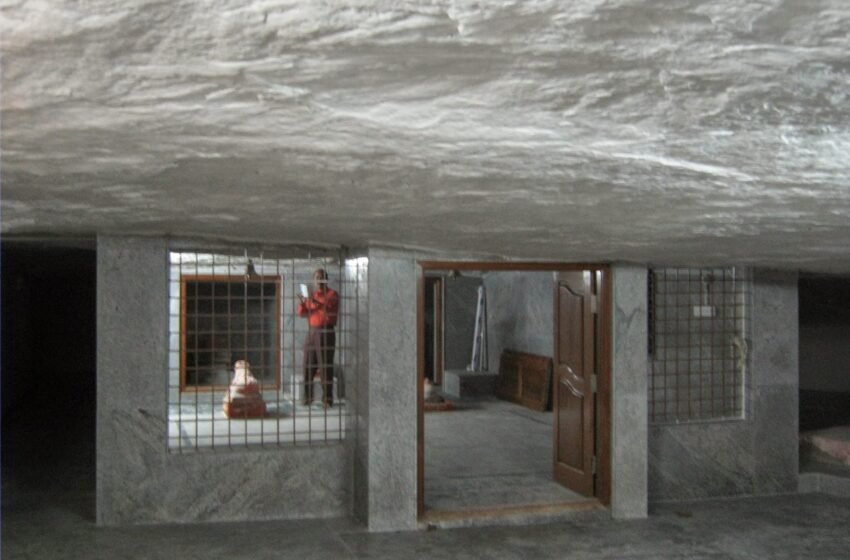Exploring the Mystical Ramalingeshwara Cave Temple: A Journey into Ancient Devotion

The Ramalingeshwarq Cave Temple, also known as the Hulimavu Shiva Cave Temple, is a significant religious and historical site located on Bannerghatta Road in Karnataka, near the BGS National Public School. Managed by the Sri Sri Bala Gangadaraswami Mutt, this ancient temple is revered as a place of spiritual significance. Nestled within a natural rock cave, the temple is believed to be over 2,000 years old, making it one of the oldest cave temples in the region. With a Shiva Lingam as its central deity and an intriguing history, the temple continues to draw visitors seeking peace and divine blessings.
History and Discovery
The Hulimavu Cave Temple holds a fascinating yet somewhat enigmatic history. While the Archaeological Survey of India (ASI) acknowledges that the cave itself is over 2,000 years old, the temple within the cave is believed to have been established about 400–500 years ago. The last major renovations were reportedly carried out by Sri Sri Balagangadaraswami, a revered figure associated with the temple.
According to local legends, the temple became a significant spiritual center when Sri Ramanand Swamiji, a saint, meditated in the cave for many years. His samadhi is preserved inside the cave as a mark of his spiritual journey. In 1850, the idols of deities were consecrated in the temple, giving it its current form.
The discovery of the cave and its transformation into a temple are linked to an intriguing story. Mariappa Swamiji, the managing trustee of the temple, is said to have met a sage while working on repairs at the Sri Vishwanath Temple in Nandi Hills. The sage tasked him with finding another saint meditating in a cave in Bengaluru. This search led Mariappa Swamiji to Sri Ramanand Swamiji in the Hulimavu Cave. Following this discovery, a temple was built, and later, a samadhi was constructed for the saint after he attained Jeeva Samadhi 12 years later. This makes the Hulimavu Cave Temple one of the few known sites in Bengaluru with a Jeeva Samadhi.
Architectural Features of the Cave Temple
The Hulimavu Cave Temple is carved from a single rock, showcasing the remarkable craftsmanship of ancient artisans. The natural cave provides a serene and meditative environment, ideal for spiritual practices. The main hall of the temple features nine granite slabs etched with depictions of the Navagrahas—the celestial bodies revered in Hindu astrology. These include the Sun, Moon, Mars, Mercury, Jupiter, Venus, Saturn, Rahu (ascending lunar node), and Ketu (descending lunar node).
On one side of the cave, there is an old dhyana mantap (meditation hall), which adds to the temple’s spiritual ambiance. This structure is believed to have been used by saints and devotees for deep meditation over the centuries. The simplicity of the cave temple, combined with its spiritual significance, makes it a unique and revered site in Karnataka.
Deities and Sacred Elements
The Hulimavu Cave Temple is dedicated to three main deities, each symbolizing a different aspect of divinity. At the center of the shrine is a Shiva Lingam, representing Lord Shiva, the destroyer and transformer in the Hindu trinity. To one side is an idol of Devi, symbolizing feminine power and divine energy, while on the other side is an idol of Lord Ganesha, the remover of obstacles and patron of wisdom.
The presence of the samadhi of Sri Ramanand Swamiji inside the temple further enhances its spiritual significance. Devotees often pay homage to the saint, whose life and meditation within the cave are believed to have sanctified the space.
Outside the main temple, there is a shrine dedicated to Sri Ramanand Swamiji, housed in a red-and-white striped structure. This shrine features a statue of the saint along with a beautiful idol of Lord Krishna, adding to the temple’s religious appeal.
Visitor Experience and Accessibility
Hulimavu is located about 15 kilometers from the Majestic Bus Stand in Bengaluru. Depending on traffic, it takes around one to one and a half hours to reach the temple. The temple complex offers ample parking facilities, making it convenient for visitors traveling by private vehicle.
Once inside the temple, visitors are encouraged to explore the various deities and sacred spaces, including the samadhi of Sri Ramanand Swamiji. The peaceful environment of the cave provides a perfect setting for meditation and introspection, attracting both spiritual seekers and tourists.
Conclusion
The Hulimavu Cave Temple is not just a place of worship but also a site of immense historical and spiritual importance. Despite being over 2,000 years old, it remains relatively lesser-known compared to other temples in Karnataka. The temple’s unique history, natural cave setting, and sacred deities make it a remarkable destination for those seeking a deeper connection with India’s rich cultural heritage.
While the temple has not gained widespread publicity, it holds a special place in the hearts of those who visit and experience its tranquil ambiance. With its fascinating stories, ancient architecture, and spiritual significance, the Hulimavu Cave Temple stands as a testament to India’s enduring legacy of devotion and artistry. Visitors and devotees alike are sure to leave with a sense of peace and reverence, having witnessed one of Bengaluru’s hidden treasures.


